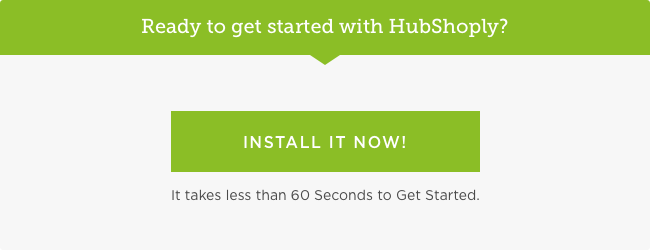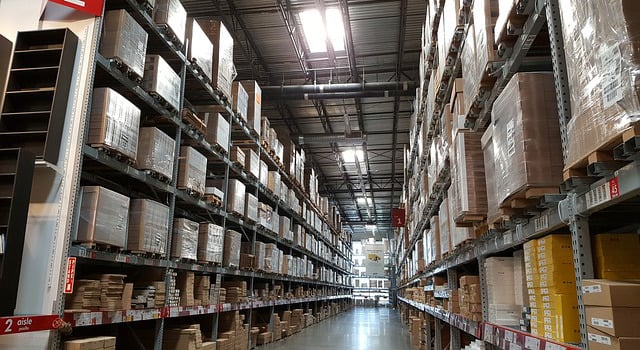There's no interaction point more critical for eCommerce companies than the shopping cart. For HubSpot customers who use Shopify for their check-out experience, we have some welcomed news. Groove, a HubSpot Platinum Agency Partner, has built the first HubSpot and Shopify Integration, lovingly dubbed HubShop.ly.

HubShop.ly will leverage shopping cart data to help marketers better understand their buyers, create highly targeted re-engagement campaigns, and drive more revenue.
Note: This custom-developed application costs $99/month and is the best fit for customers who are on HubSpot Professional or HubSpot Enterprise accounts.
Here's how to make the most of it:
Re-engage Abandoned Shopping Carts
According to the Baymark Institute, nearly 68% of online shoppers abandon their shopping carts while browsing for products online. HubShop.ly will enable eCommerce companies to use workflows to automatically trigger follow-up emails to any prospective customer who has left unpurchased items in their shopping cart. Groove has found that clients using the Shopify integration to send shopping cart fetch-back emails have seen a 21% decrease in shopping cart abandonment. What are the tricks to sending a good shopping cart fetch back email?
- Include relevant imagery: Add pictures of the abandoned products to remind users what caught their eye to begin with. These images can be automatically pulled in by the HubShop.ly app.
- Make it easy to get back into the decision process: Include a "session restore" link that will drop customers right back into where they last left their shopping cart.
- Include an incentive: Often consumers abandon a cart because they are concerned about shipping costs, delivery times or other obstacles. Incentives like free shipping or a discount can offset some of these concerns and get the prospective customer to buy.
Segment and Report on Your Customers by Shopping Cart Behavior
Using HubShop.ly and the Contacts report together you can start to report on your best performing customers, channels and content as it relates to shopping cart purchases. Integrating purchase data into your analytics can close the sales/marketing loop and help you better see what's working for your company.
- Lifetime Revenue: See a report of your best customers and the channels that brought them into your site.
- Average order value: See which of your marketing efforts have led to higher value purchases and gain a better understanding of what personas have high-value average orders.
- Products purchased: See which products are selling most successfully and to which persona.
- Purchase totals: Create a waterfall of your monthly purchase total to see if you're on track to hit your goals.
Create Personalized and Triggered Emails
Abandoned cart recovery emails aren't the only way to optimize your eCommerce funnel. Nurturing buyers through a series of well-timed and relevant communications can speed up both the path to purchase and the repeat purchase process. Each email has its own tone, purpose and tactical angles to improve virality.
Welcome series: An email triggered by a first-time purchase is designed to give the buyer the lay of the land when it comes to purchasing from your company. A personalized confirmation of purchase, shipping and return information are all standard in welcome emails. Additionally, you may want to make the buyer's first time experience better and encourage future purchases by including a thank-you discount for their next purchase.
Post Purchase Follow-ups: Send the buyer a photo and description of their purchase and include elements like tracking codes or expected arrival dates. This email primarily serves as a confirmation for their purchase but, like the welcome series, can also be used to encourage the buyer to spread the word about their purchase and your company on social media.
Product Review Requests: A product review request can be sent out any time but is typically best within the month of purchase. The goal here is to make it as easy as possible for a customer to leave a review of the product they purchased and add "social proof" for future prospective buyers. Since product reviews are major decision drivers for buyers, clean everything out of the email except the request for a review and make the email to review flow a one-step process whenever possible.
Repeat Purchase: Did the customer buy something that has a natural expiration or depletion date? Set a workflow to automatically send an email whenever that time period comes to a close. You can use the HubShop.ly integration and reports to see how frequently your buyers are returning to re-purchase and set your email reminders around that model.

We've talked mainly about emails in this post, but of course if you have smart content you can use each of these triggers and data points to also adapt the content on your website. You can, for example, prioritize products that the customers have a history of purchasing or welcome back first time buyers with a special banner or message.
If you use Shopify on your website the options for the kind of marketing you could do with HubSpot and Shopify just got much wider. We're happy to answer any questions about the integration and would love to hear your ideas on other ways to use Shopify and HubSpot together.










